©Copyright 2019 SIKO POLYMERS (SUZHOU) CO., LTD All rights reserved.Site Map Powered by iwonder.cn
- Email Uskevin@sikopolymers.com


The photovoltaic junction box is a connector between the solar cell array composed of solar cell modules and the solar charge control device. It is a cross-disciplinary comprehensive design that combines electrical design, mechanical design and material science.
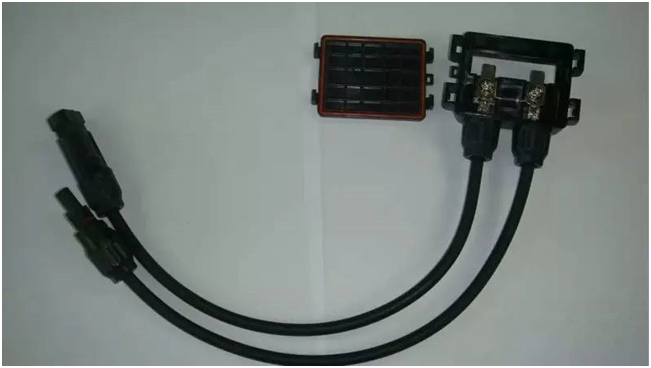
1. Requirements for photovoltaic junction box
Due to the particularity of the use of solar cell modules and their expensive value, the solar junction box must have the following characteristics:
1) It has good anti-aging and UV resistance;
2) Can be used in harsh outdoor environments;
3) It has an excellent heat dissipation mode and a reasonable inner cavity volume to effectively reduce the internal temperature to meet electrical safety requirements;
4) Good waterproof and dustproof function.
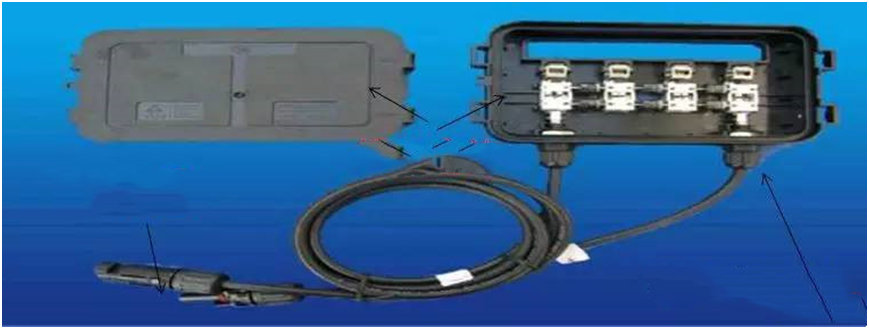
2. Regular inspection items of junction box
▲Sealing test
▲Weather resistance test
▲Fire performance test
▲Fixing performance test of end feet
▲Connector plug-in reliability test
▲Diode junction temperature detection
▲Contact resistance detection
For the above test items, we recommend PPO materials for junction box body/cover parts; PPO and PC materials for connectors; PA66 for nuts.
3. PV junction box body/cover material
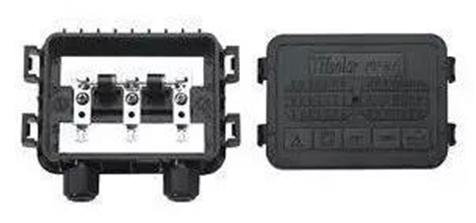
1) Performance requirements for junction box body/cover
▲Have good anti-aging and UV resistance;
▲Lower bulk resistance;
▲Excellent flame retardant performance;
▲Good chemical resistance;
▲Resistance to various impacts, such as the impact of mechanical tools, etc.
2) Several factors for recommending PPO materials
▲ PPO has the smallest proportion among the five major engineering plastics, and it is non-toxic and meets FDA standards;
▲ Outstanding heat resistance, higher than PC in amorphous materials;
▲The electrical properties of PPO are the best among general engineering plastics, and temperature, humidity and frequency have little effect on its electrical properties;
▲PPO/PS has low shrinkage and good dimensional stability;
▲PPO and PPO/PS series alloys have the best hot water resistance among general engineering plastics, the lowest water absorption rate, and little dimensional change when used in water;
▲PPO/PA series alloys have good toughness, high strength, solvent resistance, and can be sprayed;
▲ Flame retardant MPPO generally uses phosphorus and nitrogen flame retardants, which have the characteristics of halogen-free flame retardant and meet the development direction of green materials.
3) The physical properties of the recommended PPO material for the box body
Property | Standard | Conditions | Unit | Reference |
Density | ASTM D792 | 23℃ | g/cm3 | 1.08 |
Melt Index | ASTM D1238 | 275 ℃ /5KG | g/10min | 35 |
Tensile Strength | ASTM D638 | 50mm/min | Mpa | 60 |
Elongation at break | ASTM D638 | 50mm/min | % | 15 |
Flexural strength | ASTM D790 | 20mm/min | Mpa | 100 |
Flexural modulus | ASTM D790 | 20mm/min | Mpa | 2450 |
Izod impact strength | ASTM D256 | 1/8",23℃ | J/M | 150 |
UV light exposure test | UL 746C | f 1 | ||
Surface Resistivity | IEC 60093 | ohms | 1.0E+16 | |
Volume resistivity | IEC 60093 | ohms·cm | 1.0E+16 | |
HDT | ASTM D648 | 1.8 Mpa | ℃ | 120 |
Flame retardant | UL94 | 0.75 mm | V0 |
4. Cable connector material
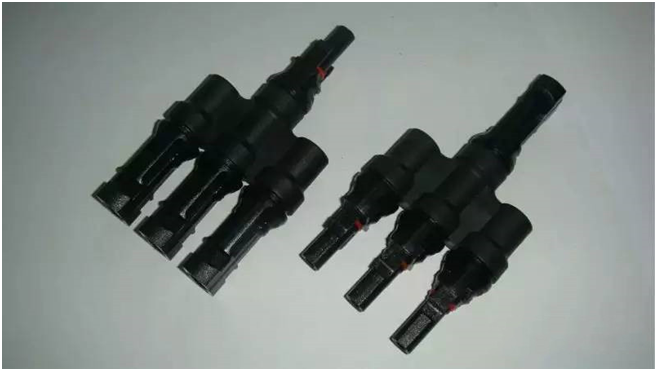
1) Key requirements for connector materials
▲Have good flame retardant performance, and the flame retardant requirements are UL94 V0
▲The connectors generally have to be inserted and pulled out many times, so the strength and toughness of the material are required to be higher;
▲The outer insulating layer has excellent anti-aging and anti-ultraviolet functions, and can be used for a long time in harsh environments.
▲Insulation performance (insulation breakdown strength and surface resistivity) requirements are high
▲Low hygroscopicity, minimal impact on electrical and dimensional stability
2) Physical properties of recommended cable connector material PPO material
Property | Standard | Conditions | Unit | Reference |
Density | ASTM D792 | 23℃ | g/cm3 | 1.09 |
Melt Index | ASTM D1238 | 275 ℃ /5KG | g/10min | 30 |
Tensile Strength | ASTM D638 | 50mm/min | Mpa | 75 |
Elongation at break | ASTM D638 | 50mm/min | % | 10 |
Flexural strength | ASTM D790 | 20mm/min | Mpa | 110 |
Flexural modulus | ASTM D790 | 20mm/min | Mpa | 2600 |
Izod impact strength | ASTM D256 | 1/8",23℃ | J/M | 190 |
UV light exposure test | UL 746C | f 1 | ||
Surface Resistivity | IEC 60093 | ohms | 1.0E+16 | |
Volume resistivity | IEC 60093 | ohms·cm | 1.0E+16 | |
HDT | ASTM D648 | 1.8 Mpa | ℃ | 130 |
Flame retardant | UL94 | 1.0 mm | V0 |
3) Physical properties of recommended cable connector material PC material
Property | Standard | Conditions | Unit | Reference |
Density | ASTM D792 | 23℃ | g/cm3 | 1.18 |
Melt Index | ASTM D1238 | 275 ℃ /5KG | g/10min | 15 |
Tensile Strength | ASTM D638 | 50mm/min | Mpa | 60 |
Elongation at break | ASTM D638 | 50mm/min | % | 8 |
Flexural strength | ASTM D790 | 20mm/min | Mpa | 90 |
Flexural modulus | ASTM D790 | 20mm/min | Mpa | 2200 |
Izod impact strength | ASTM D256 | 1/8",23℃ | J/M | 680 |
UV light exposure test | UL 746C | f 1 | ||
Surface Resistivity | IEC 60093 | ohms | 1.0E+16 | |
Volume resistivity | IEC 60093 | ohms·cm | 1.0E+16 | |
HDT | ASTM D648 | 1.8 Mpa | ℃ | 128 |
Flame retardant | UL94 | 1.5 mm | V0 |
5. Nut material
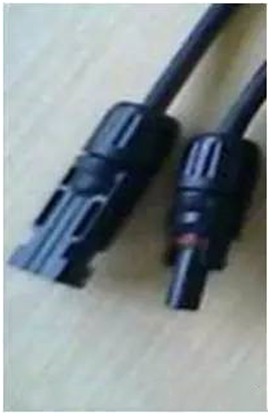
1) Key requirements for nut material
▲ Flame retardant requirements UL 94 V0;
▲Insulation performance (insulation breakdown strength and surface resistivity) requirements are high;
▲Low hygroscopicity, little influence on electrical and dimensional stability;
▲Good surface, good gloss.
2) The physical properties of the recommended nut PA66 material
Property | Standard | Conditions | Unit | Reference |
Density | ASTM D792 | 23℃ | g/cm3 | 1.16 |
Melt Index | ASTM D1238 | 275 ℃ /5KG | g/10min | 22 |
Tensile Strength | ASTM D638 | 50mm/min | Mpa | 58 |
Elongation at break | ASTM D638 | 50mm/min | % | 120 |
Flexural strength | ASTM D790 | 20mm/min | Mpa | 90 |
Flexural modulus | ASTM D790 | 20mm/min | Mpa | 2800 |
Izod impact strength | ASTM D256 | 1/8",23℃ | J/M | 45 |
UV light exposure test | UL 746C | f 1 | ||
Surface Resistivity | IEC 60093 | ohms | 1.0E+13 | |
Volume resistivity | IEC 60093 | ohms·cm | 1.0E+14 | |
HDT | ASTM D648 | 1.8 Mpa | ℃ | 85 |
Flame retardant | UL94 | 1.5 mm | V0 |